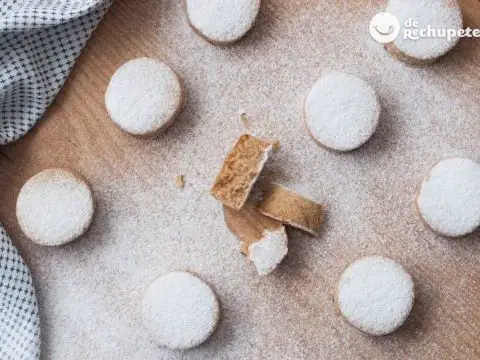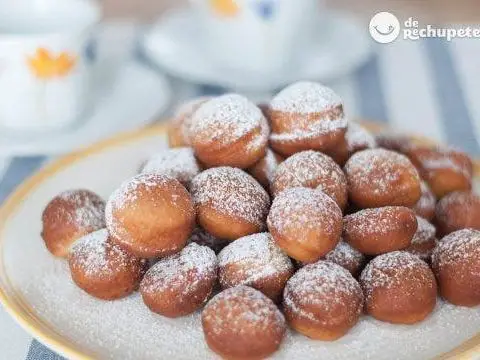
Info.
- Easy
- 60 minutes
- For 10 people
- € 0.3 / person
- 302kcal per 100g.
How to prepare a homemade cheese pasiega . The quesada pasiega is, along with the sobaos , one of the desserts with the longest tradition of pastry gastronomy in the Cantabrian community, and of course it could not be missing in our dessert recipes .
It is in the Pasiegos valleys, especially in the Selaya, Vega de Pas or Villacarriedo mountains. Places where they feed the cattle breed pasiega from which milk is extracted to prepare this sweet.
The quesada is prepared with the fresh cheese that is prepared with the milk of these indigenous cows in the area. This cheese is mixed with butter, eggs, lemon, honey or sugar and cinnamon and baked just long enough to create this local sweet, with a consistency similar to that of a pudding .
Although the first quesada recipes with that name date back to 1895, it seems that it was already in the Book of Good Love , by the Archpriest of Hita, 14th century. There is talk of a sweet made with a asadero cheese, ideal for roasting. What is clear is that it is a native and very traditional dessert of Cantabrian cuisine.
In the absence of pasiegas cows grazing through the meadows of the rest of the country and the complication in getting, on a daily basis, a good fresh pasiego cheese, I have used a fresh cheese type burgos to make this recipe.
The result I can tell you is delicious, even on the blog you can find the one prepared by my sister Nuria. She makes it more like cheesecake, as she says, Galician cheese or her fresh baked cheesecake .
I encourage you to prepare this delicious quesada pasiega or my sister’s for yours. Of course, only until we pass through the mountains of Vega de Pas to taste the most genuine.
Preparation of the passa cheese
- In this case we have chosen to make the quesada easier using fresh cheese. But if you want to try the authentic quesada it would have to be with curd (it is difficult to get it outside of Spain).
- In a bowl, crush the cheese with a fork until it becomes a grainy paste.
- It is not necessary to pass it through the mixer or the like. In the authentic quesada you can see pieces of cheese without grinding, so crushing it well with a cutlery will be enough.
- If you want to do it the traditional way, you need fresh milk and rennet.
- We boil about 3 liters of milk and once it comes to a boil we separate it from the fire and wait for it to reach 60º C. At which point we add an envelope of rennet powder, stirring until we see that it begins to cut.
- When we see all the milk separated from the whey, strain it through a cotton gauze and let it rest for 2o hours. From there we will remove the curd cheese that in this recipe we have replaced with fresh cheese.
- Add the lemon zest and the cinnamon powder. Mix well and reserve.
- In a bowl we beat the eggs with the sugar and the butter in the pomade, very soft and manageable.
- Add the cheese mixture and stir until it is integrated with the rest of the ingredients.
- Add the flour and a pinch of salt to the bowl and mix well.
Baking and final presentation of the cheese
- Spread a mold with butter on its entire surface and pour the mixture. It is not necessary that we use a mold release. Since, once the cheese is baked, we can easily remove it from the mold, if we wanted to.
- The only thing that we must take into account is that the more traditional quesada pasiega has a thickness of about 3 cm. so we must remember it when choosing the mold.
- In any case, whatever the thickness of the cake, the result will be just as good.
- Sprinkle with cinnamon.
- Bake, with the oven previously heated to 180º C, with heat from above and below and without a fan, for 40 minutes.
- We remove the mold from the oven and place it on a rack until it has been tempered. At this time it will be easier for us to remove it if we want.
We can taste this traditional pasiega pastry cold or warm, almost shortly after leaving the oven. In any case, we will have a traditional and delicious homemade dessert.
With that touch of lemon and cinnamon, together with the softness in the mouth, they make it one of the most famous and exquisite Cantabrian sweets. One of the most important desserts in Spanish pastries.
You can see all the photos of the step by step in the next album.






